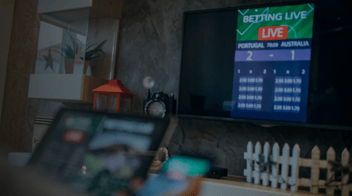Why a flexible OTT business model is crucial to build a lasting streaming business – Part 1
October 25, 2021 • OTT

George M. Perry
Over-the-top streaming apps give fans choice without forcing them to choose. If two games are on at the same time, they can watch one now and one later on demand. They can binge on their favorite talking heads studio show on Thursday so they can watch the latest stats analysis and injury report show on Friday ahead of the weekend’s full slate of games.
OTT offers the same dynamic to the front office. Instead of having one, and just one, business model for generating revenue from broadcast (media rights + commercial ad sales), OTT opens up a range of business models and the flexibility for the sports property to shift business models in response to the market.
Video on demand’s fundamental business models
The three basic business models of an over-the-top streaming app come straight from the TV industry. And like broadcast or cable TV, these models view the app as a standalone product.
Advertising-based video on demand (AVOD)
Advertising-based video on demand (AVOD) is the streaming version of network TV. There is no direct cost to viewers, but their content will be interrupted or overlaid with advertisements.
YouTube provides several examples – sometimes on a single video – of advertisements with on-demand videos. When a user clicks on an ad-supported video, YouTube will present them with an ad before the video starts to play. The ads are usually 15 or 30 seconds long, and the user may have the option to skip the ad after its first five seconds. During the video, banner ads may appear towards the bottom of the screen. And, if the video is long enough, there may be a 15 or 30 second ad break during the video.
OTT apps can use any of these options for showing ads to viewers, and can also place advertisements on the home screen of the app.
The video creator can also make the ad a permanent part of the on-screen content. Many sports, particularly soccer, which has only one break in play for commercials, will have a company logo near the scoreboard on the screen.
Subscription-based video on demand SVOD
Subscription-based video on demand (SVOD) is the streaming analog to cable’s business model, and obviously works since Netflix, Amazon Prime, Apple TV and most of the other major digital-native streaming services are subscription-based. Viewers pay a monthly or annual fee that gives them access to all or nearly all of the app’s available content.
Transactional video on demand (TVOD)
Transactional video on demand is a new name with a new acronym for another staple of cable broadcasting, particularly for sports: pay-per-view. While cable networks tried PPV for a handful of sports, it never had much traction as a sustainable business model outside of combat sports and professional wrestling.
Some streaming platforms and leagues experimented with TVOD for individual games. However, fan reaction and the evolution of other OTT business models caused them to quickly and sometimes publicly backpedal.
Streaming platforms that acquire new broadcast rights, such as Amazon Prime, are placing them with the rest of their subscription content. That way, existing subscribers are not asked to pay more, the event becomes a new revenue source from non-subscribers and the platform has the opportunity to convert the non-subscribers.
In the next article, we will be talking about how the OTT platforms thrive with flexible revenue models. Stay tuned!
SHARE THIS POST
What to read next
Why a flexible OTT business model is crucial to build a lasting streaming business – Part 2
This is a continuation to the Why a flexible OTT business model is crucial to build a lasting...
OTT Sports Streaming and the Future of Live Sports Betting
In the world of sports and entertainment, there’s a game-changing connection that is...
How Do You Get Started with Your Own Sports Streaming Platform?
Launching a sports streaming platform is a promising OTT revenue model. Since the pandemic locked...


